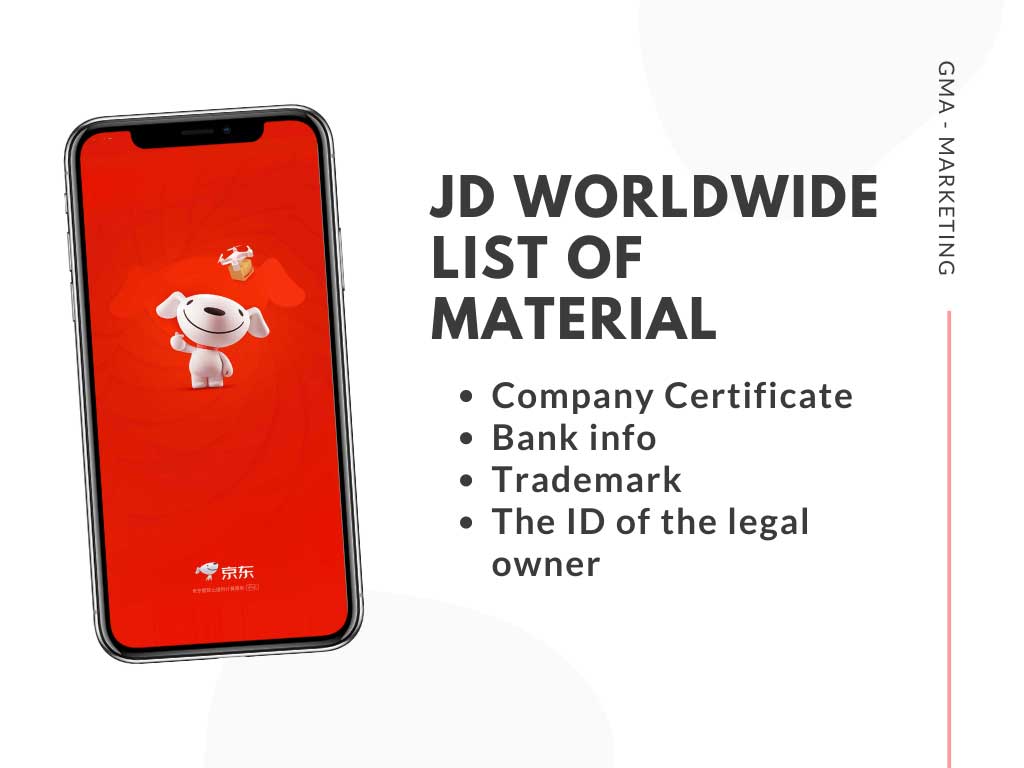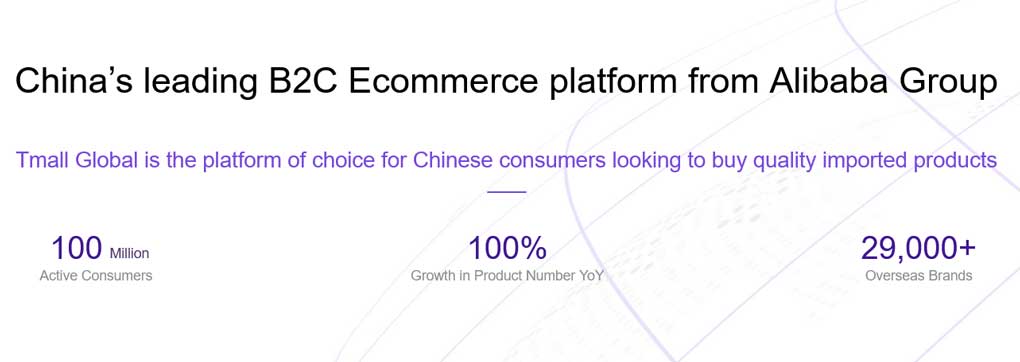As businesses expand their reach to new global markets, China has become an increasingly appealing destination. Thanks to the country’s booming economy and population of 1.3 billion people, there is seemingly endless potential for growth. However, doing business in China can be challenging for brands that are not familiar with the unique cultural landscape.
That’s where JDcom spin-off, JD Global comes in. The Chinese online marketplace offers comprehensive cross-border eCommerce services that make it easy for brands to sell products in China and capitalize on this massive market opportunity. Today we are looking into JD global, its merchant’s requirements, fees, and tips to increase your sales on the platform!

What Is JD Worldwide, and How Is It Different From JD.com?
These are the first questions that any marketing director or CEO will ask when looking at their options for selling in China. The difference can be summarized easily: JD Worldwide, sometimes called JD Global, is the cross-border e-commerce platform created by JD.com, one of China’s leading e-commerce platforms.
JD.com, also known as Jingdong, is the second-largest B2C e-commerce platform in China after Tmall. The company is known for its logistics and supply chain technology, which allows warehouses to streamline their processes and efficiently fulfill a higher number of orders to cater to more customers.
However, selling on JD.com is only available to businesses that are registered within China. It was with the launch of JD Worldwide in 2015 that JD.com opened its doors to foreign companies looking to market their products to Chinese consumers.
In order to give Chinese consumers an easy, dependable, and convenient experience when shopping for overseas products, JD Worldwide leverages partnerships with logistics companies all around the world (including DHL, YAMATO, Australia Post, and JD.com’s own logistics network) to provide warehousing and shipping solutions for businesses around the world. Through JD Worldwide, foreign brands and Chinese consumers are able to connect.
The process for selling products on JD Global can be summarized in three simple steps:
- You submit an application to run a shop on the platform,
- JD Global works with you to deliver your overseas products to Chinese consumers, and
- Chinese consumers receive your product via JD Global’s distribution services.
Interested in opening a store yet? In the following section, we’ll give you a rundown of the benefits of selling on JD Worldwide.
What Are the Benefits of Selling on JD Worldwide?
As you may already be aware, China is the largest e-commerce market in the entire world. A large proportion of the 1.4 billion people living in the country are connected to the internet, and the speed and convenience of ordering items online have made it a go-to shopping option.

JD.com and JD Worldwide are among the giants of the e-commerce scene in China, with total net revenue of 746 billion yuan (around $117 billion USD) by 2020.
Furthermore, the platform has around 240 million registered users. 80% of these users fall within the 18-45 age bracket, and around 65% have university degrees. It’s an attractive cross-border e-commerce platform for any business looking to enter the Chinese market, allowing access to a young and internet-savvy consumer base with disposable income. Aside from access to a large consumer base, there are also several other benefits to selling on JD Worldwide, such as:
- The platform is open to any brands, retailers, franchisees, and traders outside of China as long as they can provide quality services and products to Chinese customers.
- The aforementioned warehousing and shipping solutions provided by JD Global ensure that your products reach your consumers’ doorsteps even when they are in a different country.
- Payment is easy to process if you have a registered USD bank account, as JD Global only makes USD transfers. It also reduces the burden of payment-related problems, such as exchanges, refunds, and accounting.
- Your shop will have better visibility in the Chinese market — Chinese consumers tend to avoid buying from independent stores they’re unfamiliar with.
How Do I Sell My Products on JD Global?
Before you can start selling your products on JD Global, you’ll have to know three things: the requirements to start selling on JD Global, the general entry process, and the types of shops on the platform.

Basic Merchant Entry Requirements of JD Global
As mentioned, any brand from outside China can open a store on JD Global, but there are a few requirements you need to meet:
- Must be an internationally-established, non-Chinese company
- Must provide business registration documents, details of shareholders and directors, and other business details
- Must provide proof of authorization to sell (e.g. trademark registration documents, licensing agreements)
- Must have a USD bank account for payment
- Ideally, the brand has not yet launched products in China
- Must provide Chinese customer service
- Must write product details in Mandarin
- Must be able to dispatch products within 72 hours after an order has been placed
- Customers must be able to return products to an address in Mainland China
Entry Process for JD Global
The basic entry process for JD Global follows these five steps:
- Collect all necessary documentation — The process will be quicker if you secure certain documents before starting. You’ll need business details, trademark registrations, licensing agreements, details of shareholders and directors, letters of authorization, bank details, and so on.
- Contact a JD Worldwide Business Development Manager — This will be the official start of your entry process. You need to email worldwide@jd.com and express your interest in opening up a JD Worldwide shop. The Business Development Manager will ask for your documents.
- Go through the approval process — You’ll receive a registration link for your application. Monitor your application closely. Typically, it takes 2-4 weeks to process.
- Pay the necessary fees — If your shop was approved, you’ll have to pay the $15,000 USD security deposit and the $1,000 USD yearly service fee.
- Set up your JD Worldwide shop and start selling — When payment is received, the status of your shop will be switched to “open” and you will be free to build your profile, add images, upload inventory, etc.
Types of Shops on JD Global
There are four main categories of shops on JD Worldwide. Your store must fit into one of these categories.

Brand Flagship Store
This is a store directly operated by the brand owner. The products have their trademark registration overseas and the store owner is required to provide the trademark registration certificates.
Outlet-Type Flagship Store
A flagship store that isn’t directly operated by the brand owner but authorization to operate has been granted to the store owner or merchant. The merchant is required to have (or apply for) a Class 35 trademark or Service Mark overseas.
Franchise Store
Stores that operate as authorized brands, with permission from the parent company of the brand. The store owner is required to provide evidence of their authorization to operate a JD Worldwide store on behalf of the brand.
Exclusive Store
A special store type that can sell one or more authorized brand products, from up to two categories. The store owner must be able to provide evidence of the products’ source and invoices of their purchase. Furthermore, the name of the store is not allowed to infringe on the legal rights of other brands.
Cost of Investment When Opening a Store on JD Global
When you’ve been approved to open and operate a JD Global store, you will be required to pay fees. This will include:
- An initial deposit of $15,000 USD that serves as your down payment and is refundable
- A yearly service fee of $1,000 USD per store
- A commission fee of 2-8% based on sales
Keep in mind that these numbers are based on current information from JD Global at the time of publishing and are subject to change in the future. As it stands, however, JD Worldwide currently has a lower cost of investment than the other top cross-border e-commerce platform, Tmall Global. For more information on their differences, keep reading through the next section.
The Alternatives To Selling on JD Worldwide: JD Worldwide vs Tmall Global vs Taobao
If you’re interested in alternatives to JD Worldwide, the first places you’ll look at are the other big names in China’s e-commerce industry — Tmall Global and Taobao.
Now, Taobao may be the biggest e-commerce platform in the country, but it’s not meant for foreign businesses. Taobao is mainly C2C and sellers must be registered in China so that removes it from your list of considerations as a foreign business.

Tmall Global, on the other hand, is a cross-border e-commerce platform similar to JD Worldwide. Businesses from outside China are allowed to open shops and market to Chinese consumers. Its main advantages over JD Global are that it has more monthly users and you don’t need a USD bank account, however, it also has a higher cost of investment — the initial deposit is $25,000 USD, and the yearly fee ranges from $5,000-10,000 USD (based on category), and the commission ranges from 0.5-5% (based on category).
JD Worldwide still remains the better option for brands that can’t afford to take big risks. Not only are the investment costs lower but you also have the support of their extensive logistics and supply chain network to fulfill your orders on time. JD Worldwide also gives priority to brands in certain markets, such as home (e.g. appliances), health (e.g. nutritional supplements), parenting (e.g. mom and infant products), and hygiene. Lastly, JD Worldwide also has fewer restrictions on selling compared to Tmall Global.
Need help launching your JD Global Store?

Ask for an appointment with us and we will let you know how we can help you not only start selling on JD global but also how to flourish on this popular Chinese eCommerce platforms

